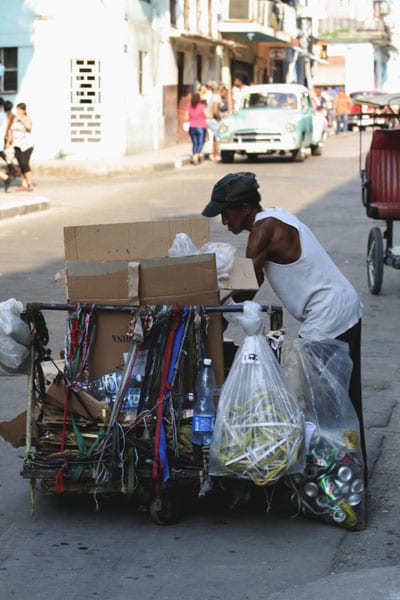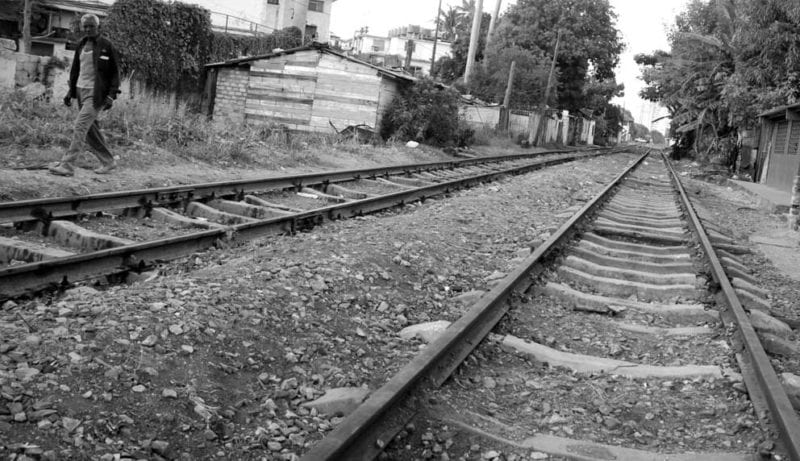In Cuba, Almost Nothing Is Considered Garbage
By Osmel Ramirez Alvarez

HAVANA TIMES — Not too long ago, I was watching a friend do a deep clean of his house and was witness to the conflict that arose between him and his father when it came to deciding what to throw away.
The fear that they might need a faulty part to repair another in the future; the uncertainty of whether “things” would be worse off in the future to find things, tormented them. In the end, everything that they threw away that day fit into a small bag and they rearranged everything, like a storehouse of used goods which could be useful one day.
That experience led me to write this post, because this country really does have some very peculiar things, the result of the special experience we have lived. The truth is, considering something “garbage” here is no easy task.
Do you really believe that fruits and vegetables that begin to go bad at the market are wasted? Of course they aren’t. Before being thrown out to the pigs, the least rotten parts are saved by poorer relatives or friends. I’ve seen it with my own two eyes! It’s a very dangerous thing to do because a lot of the time the biological agents involved in the rotting process can be intestinal pathogens in the human gut. However, these food products are so expensive that many people take the risk.
If a TV is broken without repair and is thrown out, another person will collect it and take it to a technician who will take it apart and save the tiny cables and pieces, to repair others. This is why the majority of repairs are so expensive and don’t last very long.

If a fridge-freezer rusts, the motor has blown out and the freezer is punctured, you still can’t throw it out; because one sold on the street costs the equivalent of $500 to $1,000 USD at the shopping mall (40-80 average monthly incomes). A body repair worker will repair the appliance with sheets from zinc roofs; a mechanic will redo the motor with wire stolen from the state by factory workers, put pipes in the freezer with copper tubes recovered from old boilers and installs the gas. And this is how it’s fixed, costing a lot of money, but it’s considerably less than having to buy a new one from the State.
When old and worn out rails are taken off of our railways, the majority don’t directly go back to the raw material company. Rail workers sell them off to people “to make up” for their insufficient incomes. They are used for house foundations or wooden posts, for fence posts, rustic bridge bases, pig-pens and cattle pens.

Railway ties used to be mostly made of wood and in cities, in the ‘90s, people would destroy them with axes in hand to try and get splinters so they could cook. In Santiago de Cuba, the process to replace them with concrete ties had to be sped up because there wouldn’t have been a railway otherwise in a few years. I studied at the university there during this time and saw it happen myself.
However, concrete ties don’t escape post-crisis pillaging. They are used for house and pen footings and are broken apart so the steel can be reused. If they have rebar then these are used in other foundations; if they have wire rods, these are used for architrave rings or to manufacture nails.
Fence wire or wire tobacco coverings are also used in homemade nail manufacture. Just imagine if these were left out in the fields without being looked after. You have to pay for guards during harvest time and then take them off until the next harvest, which increases the cost of producing tobacco. Bits of old rebar are used to forge horseshoes.

Rubber from belt conveyors which is thrown out (or stolen new) are used to make shoe soles and bike tires. Here, bike tire production has become a specialty, producing great quality tires that last 10 x more than the ones the State sells; and are sold all over the country, on the black market. In Mayari, ever since the Nicaro nickel factory shut down, you can’t find belt conveyors like you could before and that’s why the new leader in production is now Moa where a large nickel factory is located.
The list is endless, but I can’t leave out the ever so famous example of alternative toilet paper or “Granma newspaper” as it is popularly known. Thanks to the use of this newspaper as toilet paper, reading Granma has become a widespread practice and many believe that the shortages in real toilet paper, which are always so scarce and expensive (only people who earn many times the minimum salary can afford it) are deliberate because the government discovered that this was the only way that the newspaper would be read by a great deal of the general population.

It might seem vulgar but I have to say it: at least half of the Cuban population have never used real toilet paper and don’t even know how to use it, as they find it dangerously soft; they are afraid that it might cause an unwanted accident as they are so used to the hardness of newspaper and it’s possible that we might have evolved somehow so as not to be allergic to its ink.
In such a situation of shortages and “boutique” prices with regard to the price of basic items, is it easy to decide whether something is garbage? As we can see, it clearly isn’t. The incredible thing here is that with this mass recycling which is compulsory because of our poverty, the State recycling company still has so many problems trying to collect solid waste in our cities. From this perspective, their inefficiency is much greater.





